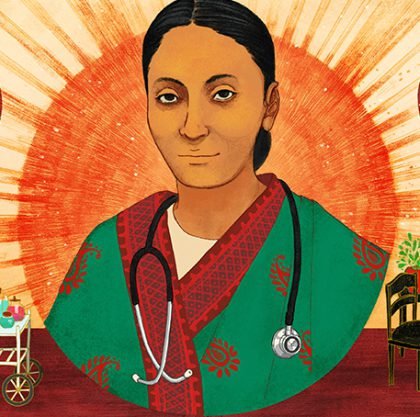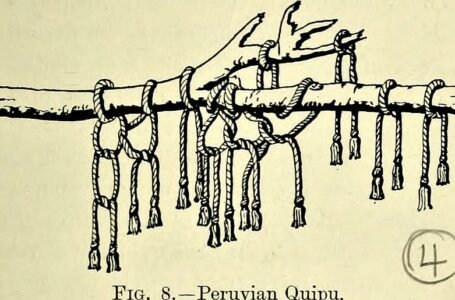Dr. Rukhmabai: The First Practicing Women Doctor

In day-to-day life, women face many problems. Still, there is no one like a woman who is as strong as her. Whatever the role she played, she exemplified it. Men may be strong physically, but the mental strength in women takes them everywhere to face the world. Normal women face many problems, what if the one who breaks the barrier of typical norms and traditions; that too in the 19th century? She must have gone one hell down to even come out of her house. She would be the centre of the topic for days, months and even years. Some may succeed in breaking the barriers and some may not. Like this, we will see about one such brave woman, Dr. Rukhmabai.

Personal Life of Rukhmabai:
Rukhmabai was born on 22nd November 1864 to Janardhan Pandurang and Jayanthibai in a Marathi Family. When Rukhmabai was only two years old, Janardhan died. Meanwhile, her mother was only seventeen years old during her husband’s demise. After six years of Jananrdhan’s death, Jayanthibai remarried a widower, Sakharam Arjun, an esteemed Physician and a Social Activist. Jayanthibai belonged to the caste of Suthar, which allows the remarriage system for a widower.
After her marriage, the same year Rukhmabai stayed and studied at home by the free books given by the Church Mission Library. Rukhmabai and her mother attended the weekly meetings of the Prarthana Samaj and Arya Mahila Samaj.

Marriage life of Rukhmabai:
At the age of 11, Rukhmabai was forced to get married to Dadaji Bhikaji, a 19-year-old man. Dadji was a cousin of Rukhmabai’s stepfather, Sakharam Arjun. This marriage broke the tradition of women being sent to husband’s house. Instead, Dadji came to Rukhmabai’s house after their marriage. Rukhmabai when having her puberty, the traditional event of “Garbhadan” was held. It means the act for the first ritual consummation of marriage. But, Sakharam Arjun opposed this act and did not allow for the early consummation.
Because of being in his wife’s house; and not being allowed to follow the rituals and forcing him to study the standard of six when he was already in the age of 20, who can go to the university made Dadji Bhikaji furious over his wife’s family. Dadji’s uncle, Narayan Dhurmaji raised him after his parents passed away, lived a life full of debts. Dadji Bhikaji with his problems already thought he could support him by using the property of his wife to clear his debts. This was refused by Rukhmabai made Dadji proposed Rukhmabai to move in with him at his house. This decision was also supported by her stepfather, Sakharam Arjun.

The case that turned her life:
Dadji Bhikaji sent a legal notice to Sakharam Arjun in March 1884 through his lawyers, that he kept holding his wife to come and live with him. In repeat, Sakhram sent him another notice through his lawyers, and Rukhmabai also refused to live with Bhikaji.
In 1885, this case became popular enough with the title, “Bhikaji vs. Rukhmabai, 1885”. This case was filed under the section of “restitution of conjugal rights”. This case came into hearing and the judgement was passed by Justice, Robert Hill Pinhey. According to Pinhey’s statement, “English precedents were unrelated to this restitution case because British law ordered the consent of adults. So, there were also some flaws in English law and the absence of Hindu instances previously”. So as a result, he declared he could not force Rukhmabai, a young woman as she married in her defenceless infancy. Judge Pinhey retired soon after.
In 1886, this case was brought up for retrial. During that time, much criticism arose against Judge Pinhey’s judgement. Even Balagangadhar Tilak, in his Pune weekly, The Mahratta wrote, “Justice Pinhey does not understand the spirit of Hindu Laws and that he sought reforms by “violent mean”. In Times of India, a series of articles appeared under the pseudonym, “a Hindu Lady” by supporting Rukhmabai’s decision. Later it was revealed that Rukhmabai herself wrote under the pseudonym. The public also debated around multiple points: Hindu vs. English Law, whether ancient customs deserved respect or not.
On March 4, 1887, Justice Farran using interpretations of Hind laws ordered Rukhmabai, to “either live with her husband or face the six months of imprisonment”. Rukhmabai concluded that she would rather live in the prison. This caused severe social debate and many criticisms. Again, Balagangadhar Tilak wrote in the Kesari newspaper, “Rukhmabai’s defiance was the result of an English education and declared that Hinduism was in danger”. At the same time, Max Muller wrote that the “legal route for the Rukhmabai’s case was not the solution and it was Rukhmabai’s education that made her the best judge of her own choices”.

Solution for the case:
After many struggles, Rukhmabai appealed to Queen Victoria for this series of cases to end. Queen Victoria overruled the court and solved this marriage. In July 1888, a settlement was passed with Bhikaji and he renounced with her for the payment of Rs.2000. Bhikaji soon after his first failed marriage, got married again in 1889.
However, contemporaries reformers like Behramji Malabari, Balagangadhar Tilak and journalistic opinions from Rudyard Kipling brought comments and debate in favour and opposed Rukhmabai’s decision over this case. The feminist discussions were also published in the British Women’s Magazines.
Age of Consent Act, 1891:
This case generated a great deal between India and England. The publicity and debate caused the “Age of Consent Act, 1891”, which changed the age of consent from 10 to 12 years across British India.

Rukhmabai, the first Medical Practioner:
After this huge case, Rukhmabai started focusing on her studies and ambition of becoming a Doctor. She received support from Edith Pechey and Shivajirao Holkar to help her to raise funds for her studies. They also supported her for breaking the cultural norms and living against the traditions. Social activists like Eva McLaren and Walter McLaren and the Medical activist, Adelaide Manning helped her to establish, “The Rukhmabai Defence Committee”. This committee helped Rukhmabai in raising funds to continue her education. On, Rukhmabai 1889 went to study medicine in England.
In 1894, from the London School of Medicine for Women she received her Doctor of Medicine. She also studied at the Royal Free Hospital to practice her medicine. In 1895, she worked as the Chief Medical Officer at the Women’s Hospital at Surat on her return to India. To work at the Zenana (Women’s) State Hospital in Rajkot, she refused the offer in the Women’s Medical Service. She worked there until her retirement in 1929. She also established the Red Cross Society at Rajkot. She settles down in Bombay (Mumbai) after her retirement.

In 1929, she published a pamphlet, “Purdah – the need for its abolition”. This pamphlet is about young widows who were denied the chance to contribute to the Indian Society. She also decided to take the Widow attire after the death of her ex-husband, Dadji Bhikaji in 1904. Rukhmabai died at the age of 90 in a fight with Lung Cancer in September 1955.


